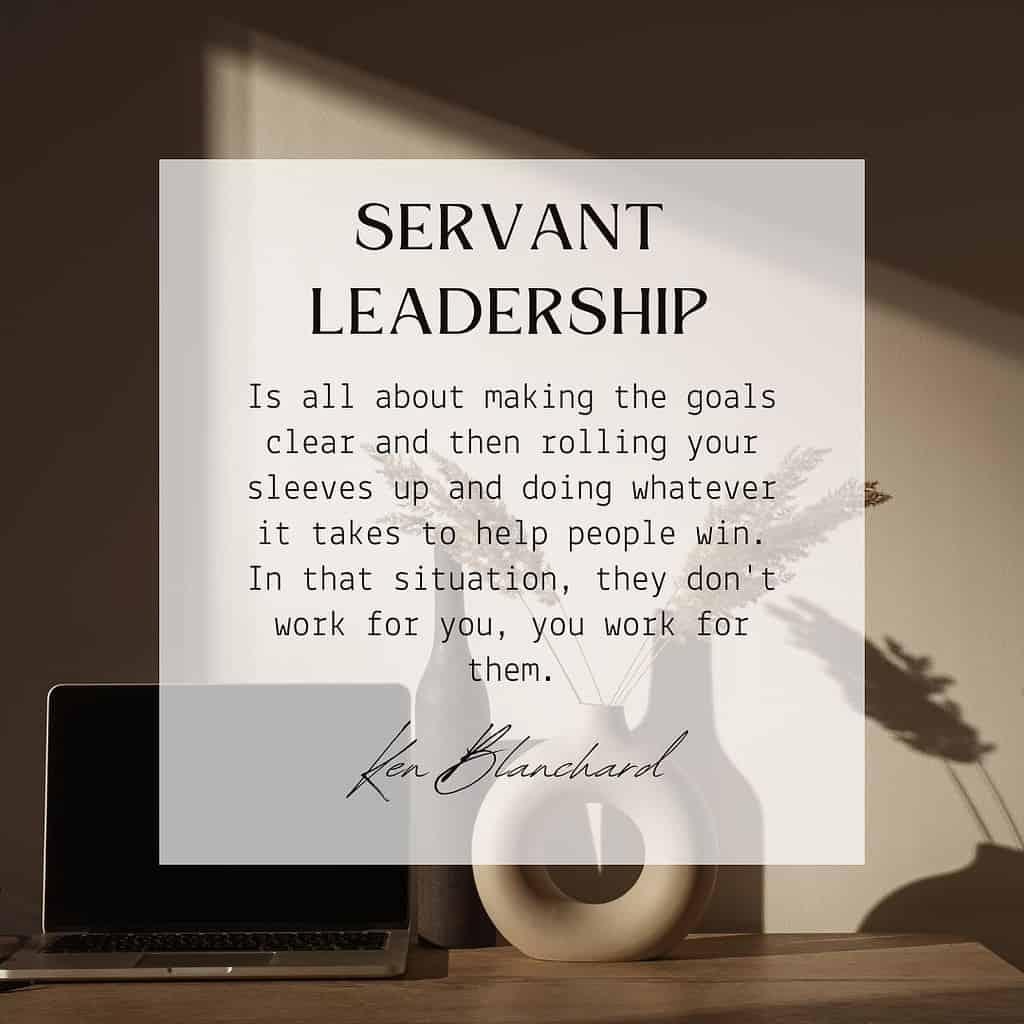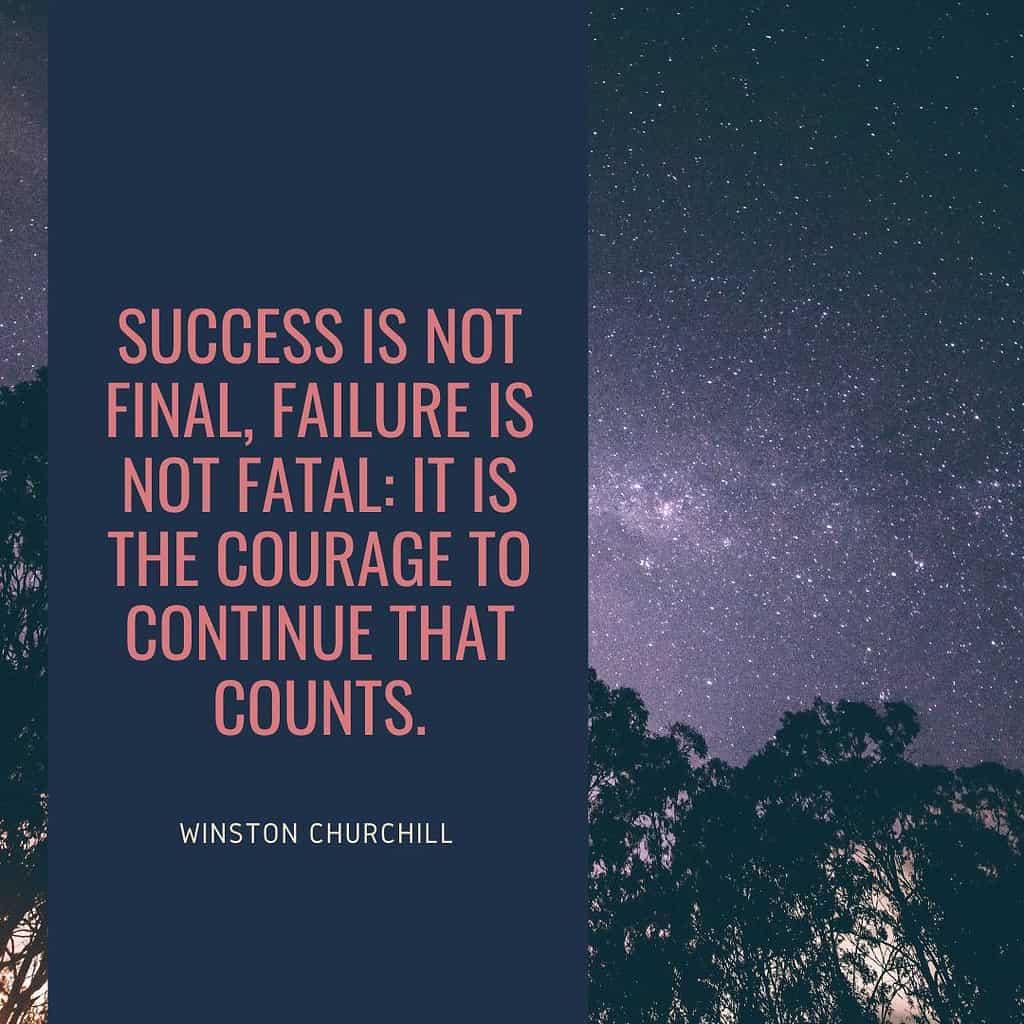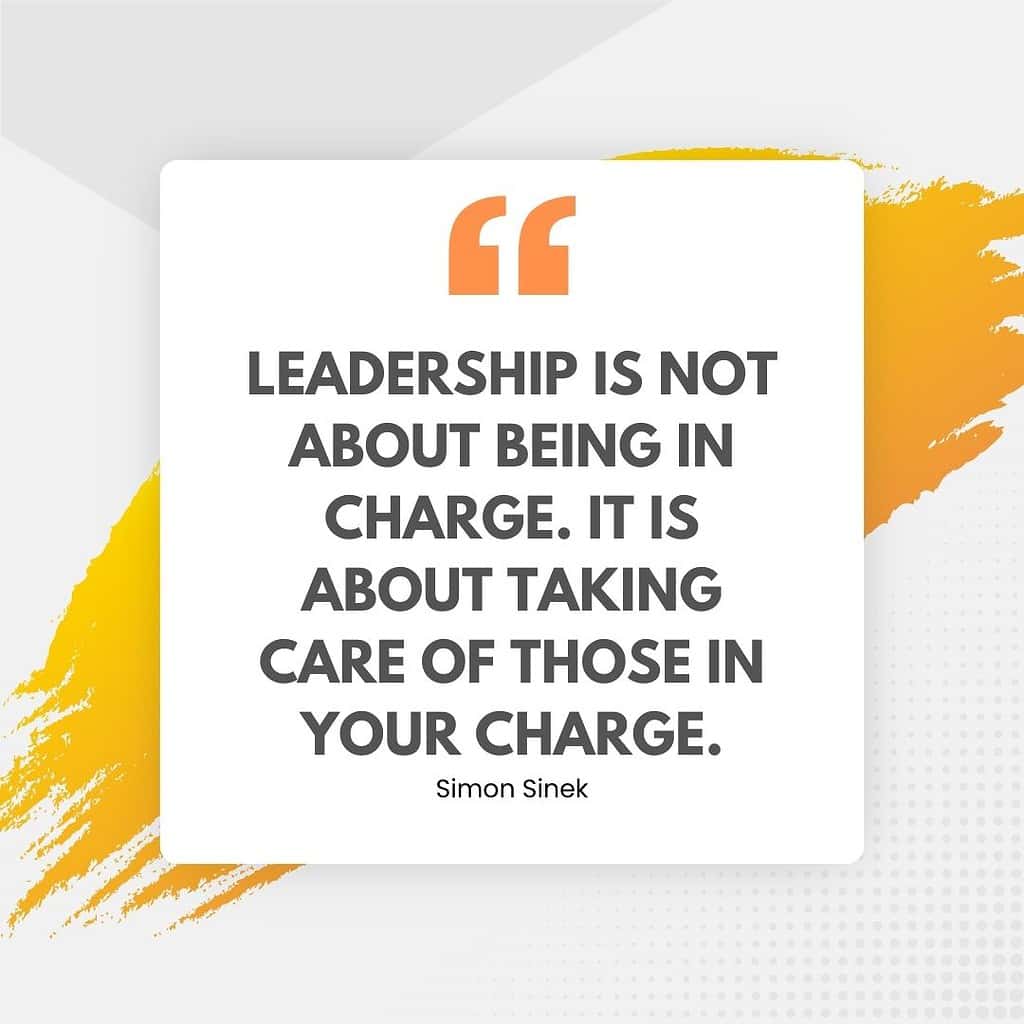Happy Friday! As we wind down another week, it’s the perfect moment to reflect, recharge, and reset for the challenges ahead. Whether you’re managing a team, spearheading a project, or just aiming to lead yourself better, the journey of leadership is both challenging and rewarding. Today, let’s delve into some inspiring thoughts on leadership that will empower you to end your week on a high note and prepare for a new one with fresh energy and perspective.
Embrace the Role of Servant Leadership

Servant leadership is a leadership philosophy that emphasizes the importance of serving others and putting their needs first. At its core, servant leadership means that a leader’s primary role is to serve others, ensuring their growth, well-being, and success. So, how can leaders fully embrace this inspirational approach to leadership?
1. Listen Actively
Active listening involves truly hearing and understanding what others are saying without immediately proposing solutions or inserting one’s own opinion. For leaders, this means being present in conversations, asking open-ended questions, and validating team members’ feelings and perspectives.
2. Empower and Trust Your Team
A servant leader believes in the capabilities of their team members. Rather than micromanaging, they empower their team to make decisions, take initiative, and learn from their experiences. This fosters a culture of trust and mutual respect.
3. Prioritize Personal Growth and Development
A hallmark of servant leadership is the commitment to the growth of every team member. This means offering opportunities for professional development, mentoring, and training. By investing in the holistic growth of your team, you not only enhance their careers but also benefit the organization in the long run.
4. Show Genuine Care and Concern
This goes beyond the boundaries of professional responsibilities. Check in on your team members and understand their aspirations, challenges, and what they value in life. Celebrate their professional and personal achievements and offer support during challenging times.
5. Share Power
Rather than clinging to power, a servant leader shares it. This could mean involving team members in decision-making processes, seeking their opinions on crucial matters, and ensuring that they have a voice and that it’s heard.
6. Self-Reflect
Regular self-reflection allows leaders to assess their actions and intentions. By constantly evaluating and aligning your actions with the principles of servant leadership, you ensure that you stay true to its core philosophy.
7. Lead with Humility
Recognize that every team member brings value to the table regardless of their position. Acknowledge your mistakes, be open to feedback, and constantly look for areas of improvement. A humble leader learns from everyone and continuously evolves.
8. Commit to the Greater Good
Always look at the bigger picture. Servant leaders focus on the collective success of the team and organization, not just individual accomplishments. They make decisions considering the long-term impact and what’s best for everyone involved.
9. Be Accessible
Keep an open-door policy, allowing team members to approach you with their ideas, concerns, and suggestions. Feeling that their leader is approachable and genuinely interested in their well-being fosters a deeper sense of loyalty and commitment.
10. Walk the Talk
Lastly, embody the values and principles you advocate. Your actions should be a reflection of your commitment to servant leadership. When team members see their leader practicing what they preach, they are more likely to trust and follow suit.
Embracing the role of servant leadership requires a paradigm shift in how leaders perceive their roles. It’s not about power or control but service, empowerment, and collaboration. In the long run, servant leadership doesn’t just lead to happier teams but also to more successful and sustainable organizations.
Every Failure is a Lesson

Failure and challenges are inherent aspects of any leadership journey. Instead of viewing them as setbacks or weaknesses, transformative leaders approach them with curiosity. This shift in mindset allows leaders to learn, innovate, and grow. Here’s how leaders can foster curiosity about failure and challenges:
1. Reframe the Narrative
Start by reframing how you think about failure. Instead of seeing it as a negative outcome, consider it a stepping stone or a learning opportunity. Change your internal dialogue from “I failed” to “What can this teach me?”
2. Ask Open-Ended Questions
When faced with challenges, dive deep by asking probing questions:
- What led to this situation?
- Were there early signs that we missed?
- How could we approach this differently in the future?
Open-ended questions stimulate critical thinking and facilitate a comprehensive understanding of the situation.
3. Encourage a Culture of Feedback
Create an environment where team members feel safe sharing their perspectives. Constructive feedback can provide invaluable insights into areas of improvement and potential pitfalls.
4. Analyze Failures without Assigning Blame
Instead of looking for someone to blame when things go wrong, focus on understanding the systemic issues that led to the failure. This objective analysis allows for genuine learning and improvement.
5. Celebrate Risk-Taking
Reward and acknowledge team members who take calculated risks, even if they don’t always result in success. Recognizing effort and innovation can encourage a culture of experimentation and growth.
6. Promote a Growth Mindset
Cultivate an organizational culture that values continuous learning and development. When team members believe skills and intelligence can be developed, they’re more likely to embrace challenges and persist in facing setbacks.
7. Share Your Own Failures
Be vulnerable and share your experiences with failure and how you learned from them. This not only humanizes you as a leader but also reinforces the idea that failures are stepping stones to success.
8. Organize Reflective Sessions
After significant projects or milestones, hold debriefing sessions. Encourage open dialogue about what went well and what could be improved. This collective reflection ensures continuous improvement.
9. Stay Updated and Informed
Continuously educate yourself about the latest trends, strategies, and methodologies in your industry. This knowledge can offer fresh perspectives on challenges and equip you with innovative solutions.
10. Seek External Perspectives
Sometimes, being too close to a situation can lead to blind spots. Engage with mentors, industry peers, or even professionals from different industries to gain varied insights into challenges.
11. Practice Resilience
Resilience is the ability to bounce back from setbacks and adapt to change. Leaders can approach failures and challenges with purpose and optimism by cultivating resilience.
12. Invest in Training and Development
Equip your team with the skills and knowledge they need to navigate challenges. They can approach problems with curiosity and confidence when better prepared and trained.
In conclusion, the path to effective leadership is riddled with challenges and failures. However, adopting a curious mindset can transform these hurdles into invaluable learning experiences. As the adage goes, “It’s not about how many times you fall, but how many times you get back up.” Embrace challenges, get curious, and lead with confidence.
Cultivate Empathy

Empathy, the ability to understand and share the feelings of another, is more than just a soft skill. It’s a cornerstone of effective leadership. In an ever-evolving workplace characterized by diversity, complexity, and rapid change, empathetic leaders have a distinct advantage. They build strong teams, foster open communication, and promote a culture of understanding and collaboration. So, how can leaders cultivate this crucial trait? Let’s dive in.
1. Practice Active Listening
Genuinely listening to someone means being present in the moment, avoiding interruptions, and refraining from formulating your response while they’re speaking. Active listening shows you care and are genuinely trying to understand their perspective.
2. Open Yourself to Feedback
Inviting and being receptive to positive and critical feedback allows leaders to understand the impact of their actions and decisions on others. It’s an opportunity to see oneself through others’ eyes.
3. Engage in Regular Check-ins
Regularly check in with team members instead of waiting for scheduled reviews or meetings. Ask about their challenges, what’s going well, and personal well-being. This ongoing dialogue fosters trust and understanding.
4. Empathize with Different Perspectives
Challenge yourself to step into someone else’s shoes. When decisions or conflicts arise, consider the various perspectives of those affected. This broadened viewpoint often leads to more inclusive and thoughtful solutions.
5. Show Genuine Care
Small gestures, like asking about a team member’s weekend, celebrating personal milestones, or acknowledging when someone might be going through a tough time, can have a big impact.
6. Educate Yourself
Read books, attend workshops, and engage in discussions about emotional intelligence and empathy. Understanding the theory and science behind these concepts can deepen your practice.
7. Avoid Snap Judgments
Pause and reflect before forming an opinion or making a decision, especially in emotionally charged situations. Give yourself time to process information and understand the nuances of a situation.
8. Encourage a Culture of Empathy
Lead by example and encourage team members to practice empathy with each other. Offer training sessions, promote team-building activities, and celebrate instances where empathy made a difference.
9. Practice Self-awareness
Understanding your own emotions, triggers, and biases can help you better navigate interactions with others. Regular reflection and even practices like meditation can heighten self-awareness.
10. Seek Diverse Interactions
Engaging with people from diverse backgrounds, cultures, and experiences broadens your understanding of the world. It challenges biases and helps you appreciate the richness of diverse perspectives.
11. Validate Others’ Feelings
Acknowledging and validating them is crucial, even if you don’t fully agree or understand someone’s feelings. It communicates that their feelings are legitimate and worthy of respect.
12. Share Personal Experiences
Being vulnerable and sharing your own challenges, failures, and experiences can bridge the gap between you and your team. It humanizes leadership and fosters deeper connections.
In conclusion, empathy is not just about understanding others’ feelings but valuing them. As leadership challenges become more complex, the importance of empathy only grows. By cultivating empathy, leaders can foster a collaborative, understanding, and resilient workplace where everyone feels valued and heard. Remember, leadership is not just about guiding but also understanding.
Continuous Learning is Key

The most effective leaders understand that their journey is one of perpetual learning. As industries evolve, technologies advance, and workplace cultures shift, leaders who prioritize continuous learning remain adaptable, informed, and inspirational. Let’s delve into how leaders can embed the habit of continuous learning into their leadership style.
1. Cultivate Curiosity
Being genuinely curious about the world, your industry, and the people around you can drive the desire to learn. Ask questions, seek out new experiences, and regularly challenge your assumptions.
2. Set Learning Goals
Just as you set business objectives, set personal learning goals. Whether it’s mastering a new leadership technique or understanding a recent industry trend, having clear targets will keep you motivated.
3. Engage in Formal Education
This could mean attending workshops, enrolling in online courses, or even returning to school for advanced degrees. Formal educational settings offer structured learning experiences and exposure to the latest theories and practices.
4. Read Widely
From industry journals to biographies and beyond, reading expands your horizons. Dedicating even a few minutes daily to reading can expose you to diverse perspectives and new knowledge.
Get the Weekly Roundup
Receive early access to my career-changing insights.
5. Join Professional Associations
Being part of professional groups or networks can offer opportunities to attend conferences, engage in discussions, and stay updated on industry shifts.
6. Seek Mentors and Coaches
Learning from someone who has been there and done that can be incredibly valuable. A good mentor or coach offers insights from their experiences, provides feedback, and challenges you to grow.
7. Encourage a Learning Culture
Promote a culture of learning within your organization. When everyone values growth and knowledge, it becomes a collective effort with shared resources, insights, and opportunities.
8. Practice Reflective Thinking
Take time regularly to reflect on your experiences, decisions, and actions. Self-reflection can offer deep insights and highlight areas for improvement.
9. Embrace Feedback
See feedback as a gift. Whether positive or constructive, feedback from peers, subordinates, or superiors can be a powerful learning tool.
10. Stay Technologically Updated
Keeping up with the latest tools, platforms, and innovations is crucial in a world where technology evolves at breakneck speed. It enhances efficiency and ensures you remain relevant in your role.
11. Engage in Varied Experiences
Sometimes, stepping outside your comfort zone or industry can offer the most profound learning experiences. Engage in cross-industry projects, volunteer, or travel to understand different cultures and practices.
12. Share and Teach
Teaching others is one of the most effective ways to solidify your learning. Share your insights, conduct workshops, or mentor someone. Teaching reinforces learning and positions you as a thought leader.
13. Commit to a Growth Mindset
As proposed by Carol Dweck, having a growth mindset—the belief that abilities and intelligence can be developed through dedication and hard work—can drive the desire for continuous learning and resilience in the face of challenges.
In conclusion, continuous learning is not just about personal growth—it’s about ensuring that, as a leader, you remain effective, relevant, and inspirational. As John F. Kennedy aptly stated, “Leadership and learning are indispensable to each other.” So, embark on your lifelong leadership journey with an open mind and a hungry heart.
Be the Change

Leadership is not just a position or title; it’s a behavior, an example, a responsibility. Because of their influence and visibility, leaders are always under the scrutiny of their teams, peers, and stakeholders. And in the realm of leadership, nothing is more potent than the congruence between what one says and what one does. Let’s delve into why it’s paramount for leaders to model the change they wish to see and why actions truly hold more weight than mere words.
1. Actions as a Source of Credibility
While articulating a vision or change is crucial, without corresponding action, these words can easily be perceived as empty promises. When leaders actively embody the changes they advocate for, they lend credibility to their intentions and fortify trust.
2. Creating a Tangible Blueprint
By modeling desired behaviors, leaders offer a tangible, observable blueprint for their teams. This “leading by example” approach makes the abstract concrete, facilitating a clearer understanding of expectations.
3. Overcoming Resistance
Change often meets resistance. However, when team members witness their leaders embracing change, it diminishes the fear of the unknown. A leader’s commitment, demonstrated through actions, can assuage doubts and encourage adaptability.
4. Fostering a Culture of Integrity
When leaders ensure that their actions align with their words, it sets a standard of integrity for the entire organization. Such a culture values authenticity, consistency, and honesty.
5. Mitigating the “Do As I Say, Not As I Do” Syndrome
The dissonance between a leader’s words and actions can lead to confusion and disillusionment. Whereas consistency in messaging and behavior prevents the erosion of morale and motivation.
6. Accelerating the Pace of Change
The momentum for change increases dramatically when leaders actively participate in and model the new direction. Their visible commitment acts as a catalyst, accelerating the adoption of new behaviors and mindsets.
7. Building Resilience and Tenacity
A leader’s actions become even more pivotal in times of adversity or setbacks. Demonstrating resilience, persistence, and a continued commitment to the change serves as a beacon, guiding teams through challenging terrains.
8. Cultivating an Environment of Accountability
Leaders holding themselves accountable by walking their talk cultivates a broader culture of accountability. Teams are more likely to take ownership and responsibility when they see it modeled at the top.
9. Strengthening Relationships and Loyalty
Employees rally around leaders they respect and believe in. When leaders’ actions resonate with their words, it strengthens bonds, fosters loyalty, and engenders a sense of camaraderie.
10. Inspiring Future Leaders
By modeling the change, leaders are not just influencing the present but are also shaping the next generation of leaders. The examples set today become the leadership lessons of tomorrow.
In conclusion, while words articulate visions, actions bring them to life. In the intricate dance of leadership, actions are the most genuine and impactful form of communication. Mahatma Gandhi wisely advised, “You must be the change you want to see in the world.” And for leaders, this rings especially true. Embody the change, and watch as the ripple effect transforms the entire organization.
Celebrate Small Wins

It’s easy to fixate on the grand milestones and overlook the small victories that lead up to them. Yet, as research and countless successful organizations have shown, celebrating small wins can be a powerful tool to boost morale, foster engagement, and accelerate progress. Here’s how leaders can harness the magic of these miniature milestones.
1. Recognize the Value of Micro Achievements
Before celebrating small wins, leaders must first recognize their importance. Small wins are stepping stones, gradually building momentum towards larger goals. They act as consistent affirmations of progress.
2. Incorporate Regular Check-ins
Hold regular team meetings or one-on-ones where you discuss the overarching goals and the tiny victories. This ensures that these wins are consistently recognized and celebrated.
3. Personalized Shout-outs
A personalized acknowledgment can go a long way. Whether it’s a direct message, an email, or a mention in a team meeting, taking the time to personally commend someone’s effort boosts morale.
4. Create a Visual Representation
A visual board displaying progress, like a “Win Wall” or a progress tracker, can serve as a tangible reminder of all the small achievements. Team members can add their own accomplishments, creating a collective testament to progress.
5. Incorporate Fun Rituals
Perhaps every time a small win is achieved, a unique bell gets rung or a fun jingle played. These quirky rituals can add a touch of fun and make the acknowledgment memorable.
6. Encourage Peer Recognition
While recognition from leadership is valuable, peer recognition fosters a culture of appreciation. Platforms or systems where team members can acknowledge and celebrate each other’s achievements can be immensely impactful.
7. Small Tokens of Appreciation
Little gestures, like giving out a special sticker, badge, or even a treat, can make the celebration of small wins tangible. Over time, these tokens can become badges of honor.
8. Share Success Stories
During team gatherings or company-wide meetings, share stories of small wins. Narratives resonate with people; these tales of tiny triumphs can inspire and motivate others.
9. Encourage Reflection
Regularly encourage team members to reflect on their achievements, however small. Reflection not only fosters gratitude but also reinforces the behavior that led to the win.
10. Iterative Learning from Small Wins
While celebrating, it’s also an opportunity to learn. Discuss what worked, what didn’t, and how the team can replicate success. This way, small wins become stepping stones to even bigger successes.
11. Foster a Culture of Celebration
Encourage a work environment where every win, no matter how minor, is worth acknowledging. When celebration becomes ingrained in the culture, it naturally boosts collective morale and enthusiasm.
12. Connect Small Wins to the Bigger Picture
While celebrating, always tie back the significance of the small win to the larger mission or goal. This helps team members understand the cumulative impact of their efforts.
Celebrating small wins is not just about acknowledging achievements but also amplifying positivity, fostering resilience, and keeping the momentum alive. As Teresa Amabile and Steven Kramer noted in their book ‘The Progress Principle,’ “Of all the things that can boost emotions, motivation, and perceptions during a workday, the most important is making progress in meaningful work.” By celebrating the small wins, leaders can ensure this progress is consistently recognized, appreciated, and amplified.
Always Keep the Bigger Picture in Mind

Leaders often find themselves at the crossroads of visionary planning and daily operations. The challenge is to not lose sight of the overarching vision amidst the chaos of daily tasks and immediate pressures. How can leaders maintain this delicate balance? Let’s explore strategies to ensure that the grand vision remains at the forefront, even while navigating the nitty-gritty of daily leadership.
1. Start with “Why”
Simon Sinek’s influential concept of starting with “Why” emphasizes the importance of understanding and communicating the purpose behind any action. By constantly reiterating the purpose and aligning daily tasks with the bigger “Why,” leaders can ensure that actions are always tied back to the broader vision.
2. Visual Reminders
Whether it’s a vision board, a motto displayed prominently in the office, or regular presentations about long-term goals, visual reminders can be powerful cues, ensuring the vision remains top-of-mind.
3. Break Down the Vision
Translate the overarching vision into quarterly, monthly, and weekly goals. This breakdown ensures a clear roadmap, aligning daily tasks with long-term objectives.
4. Prioritize Ruthlessly
With countless tasks vying for attention, it’s essential to prioritize based on alignment with the vision. Before committing to any task, leaders should ask, “Does this move us closer to our ultimate goal?”
5. Daily Reflections
Set aside a few minutes at the start or end of each day to reflect on the tasks completed and assess how they align with the broader vision. This daily ritual can help leaders stay on track and make necessary course corrections.
6. Embed the Vision in Team Culture
The more the team is immersed in the ultimate vision, the easier it becomes to maintain alignment in daily operations. Regular discussions, team meetings, and brainstorming sessions focused on the vision can help embed it in the organizational culture.
7. Seek Feedback
Encourage open communication and feedback from team members. They can often provide valuable insights on whether daily operations align with the vision and suggest course corrections.
8. Delegate with Clarity
Delegation is essential for effective leadership. However, when delegating tasks, leaders must communicate how the task fits into the larger picture, ensuring alignment at every level.
9. Celebrate Alignment
Acknowledge and celebrate moments when team efforts perfectly align with the vision. This not only reinforces the importance of the vision but also encourages the team to maintain this alignment.
10. Stay Educated and Adaptable
The path to realizing a vision is rarely a straight line. By staying updated with industry trends, leaders can adapt their strategies, ensuring that daily tasks remain relevant and aligned with the evolving vision.
11. Consistent Communication
Regularly communicate the vision, its importance, and its progress to all stakeholders. This repetition ensures the vision remains at the forefront of everyone’s mind.
12. Schedule Vision Retreats
Take periodic breaks from daily operations to focus solely on the vision. Whether it’s a personal day for reflection or a team retreat, these pauses can help recalibrate and refocus efforts.
Balancing the ultimate vision with daily tasks is like navigating a ship through a vast ocean using the North Star as a guide. While the immediate waves and storms demand attention, the distant, guiding star ensures the journey remains on course. By embedding the vision in daily actions and decisions, leaders can ensure a cohesive journey toward their ultimate destination.
As we wrap up this week and prepare to embrace the next, reflect on these words of wisdom. Internalize them, and let them guide your actions. Remember, every leader has the power to inspire, change, and make a difference. It’s not about titles or hierarchies; it’s about impact. Embrace your unique leadership journey, and let’s end this week strong and start the next even stronger!


